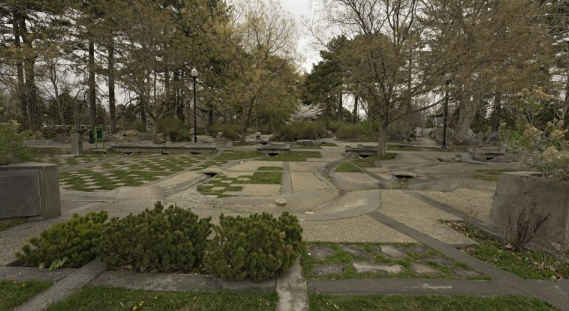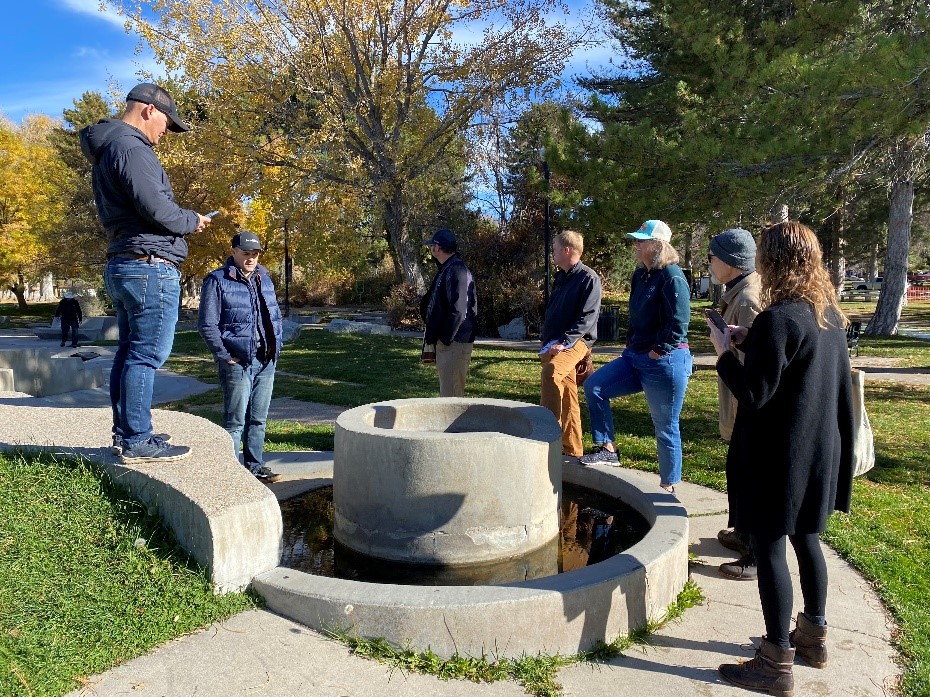
Seven Canyons Fountain
— Quick Links —
Project Description
The beloved fountain, which was built in 1993 and recreated Salt Lake City’s canyons, waterways, and mountains, has been closed since 2017 due to concerns that arose from a Salt Lake County Health Department inspection report, in addition to ongoing maintenance issues.
The City conducted feasibility studies to identify potential options for restoring the work, which included decommissioning the fountain, reimagining the artwork as a dry feature, and multiple opportunities as a full-flow, and reduced-flow water feature. The studies found that restoring the fountain with flowing water could cost $2 million to $4 million, and would require the city to use 21,000 gallons of water per day.
Project Details
Project Location
Liberty Park, 600 900 S, Salt Lake City, UT 84105
Project Manager
Kat Andra
Project Status
Securing designers & artists
Funding
CIP
History of the Fountain
For nearly 30 years, the Seven Canyons Fountain served as one of the most well-known features of Liberty Park in Salt Lake City.
Seven Canyons Fountain was a collaboration between two architects, a landscape architect, and a sculptor-Boyd Blackner, Elizabeth Blackner, Stephen Goldsmith, and John Swain. The team’s idea was to recreate Salt Lake City’s canyons and waterways so people could walk through them. Groupings of rock represent the mountains along the Wasatch Front. Miniature rivers and creeks flow from the canyons – City Creek, Red Butte, Emigration, Parleys, East Mill Creek, and Big and Little Cottonwood. They flow into the Jordan River and, later, empty into the Great Salt Lake.
The public art structure was donated to the residents of Salt Lake City in 1993 as a legacy gift from Mr. O.C. Tanner.
Project Updates
Following a feasibility study and engagement work with the community, Salt Lake City announced that it will reimagine Seven Canyons Fountain in Liberty Park into a dry art feature.
Using specialty concrete finishes, the fountain will be modified and enhanced to show the streams and landscape elements as symbolic of the different water streams and canyons they represent.
Improvements may include: landscaping and lighting enhancements, handrails, and grass turf replacement.
Two of the fountain’s original artists, Stephen Goldsmith and Liz Blackner, said, “When Dr. Obert Tanner asked us to design a place for people to experience his love of water and join him in celebrating its life force in the valley, it was a privilege and responsibility we meaningfully embraced. Now, hearing of the decision to keep the fountain dry, we feel an even deeper responsibility to design a transition strategy, such that one day, the fountain might flow again.”
Image Gallery


